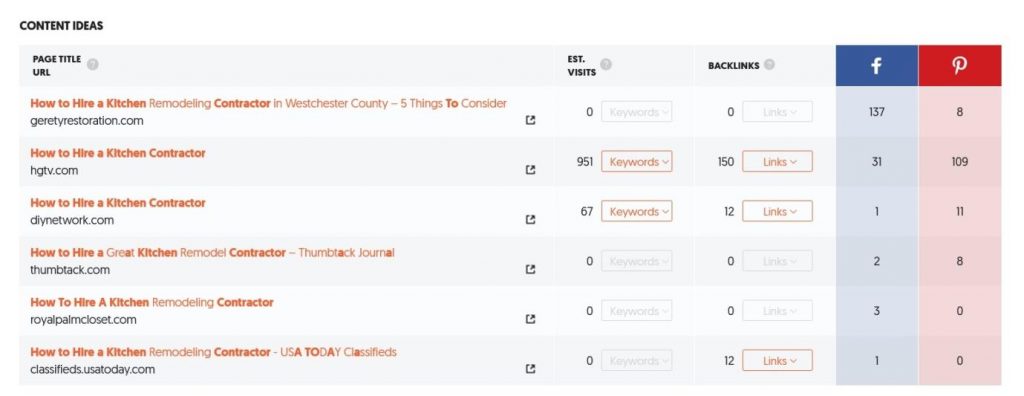How to Mount the Volume of Your Blog Content Faster yet Sustaining Quality
Your blog (i.e., knowledge segment) is one of the most opulent ways to attract massive visitors and convert prospects to your customers.
If you have just sprung the journey of growing your blog, it's so embittering to kill several hours on an individual blog post while your competitors are able to publish a new post every single day.
It's not just about the usual blog posts, but they concede a free e-book to their subscribers, showcasing their best work through case studies and conducting interviews with industry peers.
They really seem like working strategically on strengthening their brand's voice and creating compelling and memorable stories throughout their blog segment, portfolio, and social media.
- Do you really wish to replicate their editorial calendar?
- Do you want to hit several compelling posts each week?
- How can you manage a fat amount of content to be composed every month?
- Are you looking for ways to complete your blog writing tasks faster?
If you intend to write more productively and create diverse content, then read on.
P.S. More is not always great. Persuasion induces a win-win situation for you. The publishing frequency may vary depending upon your business size, industry, and sales postulates.
Research More
A conventional way to kick start your content development process is by conducting research.
You must be ingenious with the research process. You should know:
- How to apply Google alerts
- already following top industry leaders and researchers on Twitter
- Comfortable with using tools like BuzzSumo, SEM Rush, UberSuggest, and others.
Research should be a fun part; because you'll probably be spending lots of hours accessing some of the top industry blogs, analyzing their content library architecture, noticing their publishing frequency, accessing their mostly used content-formats, and their word-count.
It's a "Before" step of the writing, so designate a different time-frame for this. Keep it separate from the actual writing.
Most Pro Bloggers don't do both of the stuff at the same time.
They spend some time researching competitors' content, noting down key-points, make use of the right set of tools, and come up with great writing topics.
Here's one I use - Ubbersuggest.  The goal is to locate the best possible LSI keywords list, the most popular content optimized for those search terms - ideal pages having high statistics of backlinks + social shares. So that you can get in-line with the most handsome content post that addresses all of the wants, needs, and pain points of your intended audience.
The goal is to locate the best possible LSI keywords list, the most popular content optimized for those search terms - ideal pages having high statistics of backlinks + social shares. So that you can get in-line with the most handsome content post that addresses all of the wants, needs, and pain points of your intended audience.
SEO Optimization would be the latchkey here because you want to be visible above your competitors. So you must utilize useful tools and applications like Topic to help you come through a study of currently ranked web pages' content structure and writing up content briefs more sharply.
Start Writing, Edit Later
Follow the intent of your targeted audience based on the search term. Accordingly, proceed with the right content format - A How-to guide, a list sort of post, or even a TO-DO checklist.
Craft the outline and prepare the points list around it. No need to use fancy words to be clever with word choices. You should try to build a personal touch with the readers, so write as you talk. You're writing your first draft, so who are you talking to should be a central approach of the writing, not search bots, no SEO optimization, nothing.
At this initial stage, where you're crafting the first draft, you strive to come up with an engaging piece that addresses your reader's specific problem, and you're offering a solution. Include reference points and examples as much as possible.
Don't practice like a rookie writer - Don't stop writing after every paragraph to go back to see if you wrote it right. You can proofread and edit the entire post after finishing it.
Get Familiar with Content Repackaging
Let's discuss a move to make content production even more simple:
You already have a load of content in your blog library. It's your turn to settling down with a modified gyration on it, playing with its format, adding new graphics, or altering existing information to bring a fresh value to the index.
If done right, it can be the best weapon in your blogging arsenal.
Your competition is apparently using the same tactic to manage so much content volume without having other writers working for them.
Here's how you can apply content repackaging:
- Curating best available posts into an ebook. You can offer the free link to visitors when they subscribe or socially follow you.
- Creating a webinar with the information you have written.
- Creating newsletters and email courses.
- Turn YouTube videos into blog posts and vice-versa.
- Design infographics from the information shown in blog posts.
- Slideshare presentations.
- Take the investigation further to come up with a lengthy post based on the small data mentioned in the earlier posts.
Welcome Guest Authors
Haven't you allowed guest authors ever?
Though your blog section is mostly an outlet of your own work (the editorial front) where you guide readers about your area of specialization, as you grow, you want to give a new experience to your readers.
You also wish to expand the type of content to let your readers explore the new angles on the same topic, voices from your industry peers matter.
You might invite someone who has a track record of great writing in the same industry and can offer a fresh perspective on specific subjects.
This could expose your website and services to a wider audience. And your content machine stretches to evolve.
Adopt Prolific Visual Marketing
Are you creative with design and familiar with applications like Canva, Visually, and Snagit?
If you said a YES, then transform your industry expertise and various current statistics into an engaging visual media (they say it infographics) that's a more epic, memorable, easy-to-digest format, and shareable.
A mix-and-match of Audio and Video Interviews, QAs, and Podcasts
You already have great networking with the industry's top-notch professionals. Fine, let's nurture this relationship.
Identify the right candidate for the interview (face-to-face, email, phone call, or via audio or video-conferencing) or a QA round. Request them for their participation and schedule the date and time.
Once you get a high-credibility within the industry, top-level guys will probably agree to go with you in exchange for the link love, social reach, or greater exposure.
Curating the Best Content Out There
Rather than just retweeting others' content, curation allows you to share a bit of information (sourced by others) you think your readers will acknowledge.
Using this, you can add value to your audience's knowledge, build your network with like-minded people, and actually fill the gaps in your content calendar.
And don't forget to add your personal opinion on the reshared resource. Your audience wants to know your take, so this can be your go-to-strategy with a nicely framed design presentation.
Over to You -
Content development and scaling are always the most time-consuming and stressful side of marketing tactics.
And you always need to develop your own game plan to go over them.
You stay on the top by looking aptly at every single opportunity of sourcing the news, streaming at live trends, and utilizing every single tool that simplifies your work.

